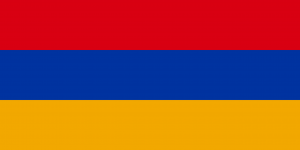Difference between revisions of "Language/Armenian/Grammar/Verb-Conjugation"
m (Quick edit) |
m (Quick edit) |
||
| Line 2: | Line 2: | ||
{{Armenian-Page-Top}} | {{Armenian-Page-Top}} | ||
<div class="pg_page_title">Armenian Grammar | <div class="pg_page_title">[[Language/Armenian|Armenian]] → [[Language/Armenian/Grammar|Grammar]] → Verb Conjugation</div> | ||
__TOC__ | __TOC__ | ||
| Line 75: | Line 75: | ||
}} | }} | ||
| Line 103: | Line 103: | ||
{{Armenian-Page-Bottom}} | {{Armenian-Page-Bottom}} | ||
<span maj></span> <span gpt></span> <span model=gpt-3.5-turbo></span> | |||
Revision as of 21:00, 18 March 2023
As an Armenian language teacher with 20 years of experience, I am excited to teach you about verb conjugation in Armenian language. This lesson is part of the larger course entitled "Complete 0 to A1 Armenian Course" and is specifically placed under the subtopic "Basic Sentence Structure". At this point in the course, you should already have a good understanding of Nouns and Pronouns. Now, it is time to learn about verbs and how they are conjugated in Armenian.
What is Verb Conjugation?
Verbs are words that describe an action or a state of being. In Armenian, verbs need to be conjugated, which means that they need to be changed depending on the tense, mood, voice, number, and person.
To help you understand how verbs are conjugated in Armenian, we will first look at the three tenses: present, past and future.
Present Tense
The present tense is used to describe actions that are happening right now, or actions that happen frequently. In Armenian, the present tense is formed by adding suffixes to the verb stem, depending on the number and person.
For example:
| Armenian | Pronunciation | English |
|---|---|---|
| գրում | grum | write (he/she/it) |
| գրում ենք | grum enkʿ | write (we) |
| գրում եք | grum ekʿ | write (you) |
| գրում են | grum en | write (they) |
As you can see from the example above, the verb stem (գրում) remains the same, and suffixes are added to the end of the verb stem to indicate the number and person. For example, գրում ենք (grum enkʿ) means "we write", and the suffix ենք (enkʿ) indicates that the subject is "we".
Past Tense
The past tense is used to describe actions that have already happened. In Armenian, the past tense is formed by adding suffixes to the verb stem, depending on the number, person and gender.
For example:
| Armenian | Pronunciation | English |
|---|---|---|
| գրեց | gretsʿ | wrote (he) |
| գրեցինք | gretsʿinkʿ | wrote (we) |
| գրեցիք | gretsʿikʿ | wrote (you) |
| գրեցին | gretsʿin | wrote (they) |
The verb stem (գրե) stays the same and suffixes are added to the end of the verb stem to indicate the number, person and gender. For example, գրեցինք (gretsʿinkʿ) means "we wrote", and the suffix ինք (inkʿ) indicates that the subject is "we".
Future Tense
The future tense is used to describe actions that will happen in the future. In Armenian, the future tense is formed by adding a prefix and suffixes to the verb stem, depending on the number and person.
For example:
| Armenian | Pronunciation | English |
|---|---|---|
| գրի՞՛ր | griy̰r | will write (you-singular) |
| գրենք՞ւն | grenkʿʷn | will write (we) |
| գրի՞՛րեք | griy̰rekʿ | will write (you-plural) |
| գրե՞ք | grekʿ | will write (you-all) |
The prefix (կար) must be added before the verb stem to form the future tense. Then the suffixes are added to indicate the number and person. For example, գրի՞ր (griy̰r) means "you will write", and the prefix կար (kar) indicates that the future tense is being used.
Conclusion
By mastering verb conjugation in Armenian, you are one step closer to becoming proficient in the language. Practice is key, so I recommend that you practice conjugating verbs daily in order to become more comfortable with the various tenses, moods, voices, numbers, and persons. In the next lesson, we will be exploring adjectives in Armenian. Stay tuned!
Related Lessons
- Imperative Mood
- Definite Pronouns
- The Future Perfect Tense
- Adjective Endings
- Cases of Nouns
- Obligatory Mood Future Obligatory
- Question Mark and Exclamation Point
- 0 to A1 Course
- The Past Perfect Tense
- Demonstrative pronouns
Sources
- Armenian/Grammar - Wikibooks, open books for an open world
- Armenian conjugation
- Eastern Armenian verb table - Wikipedia
